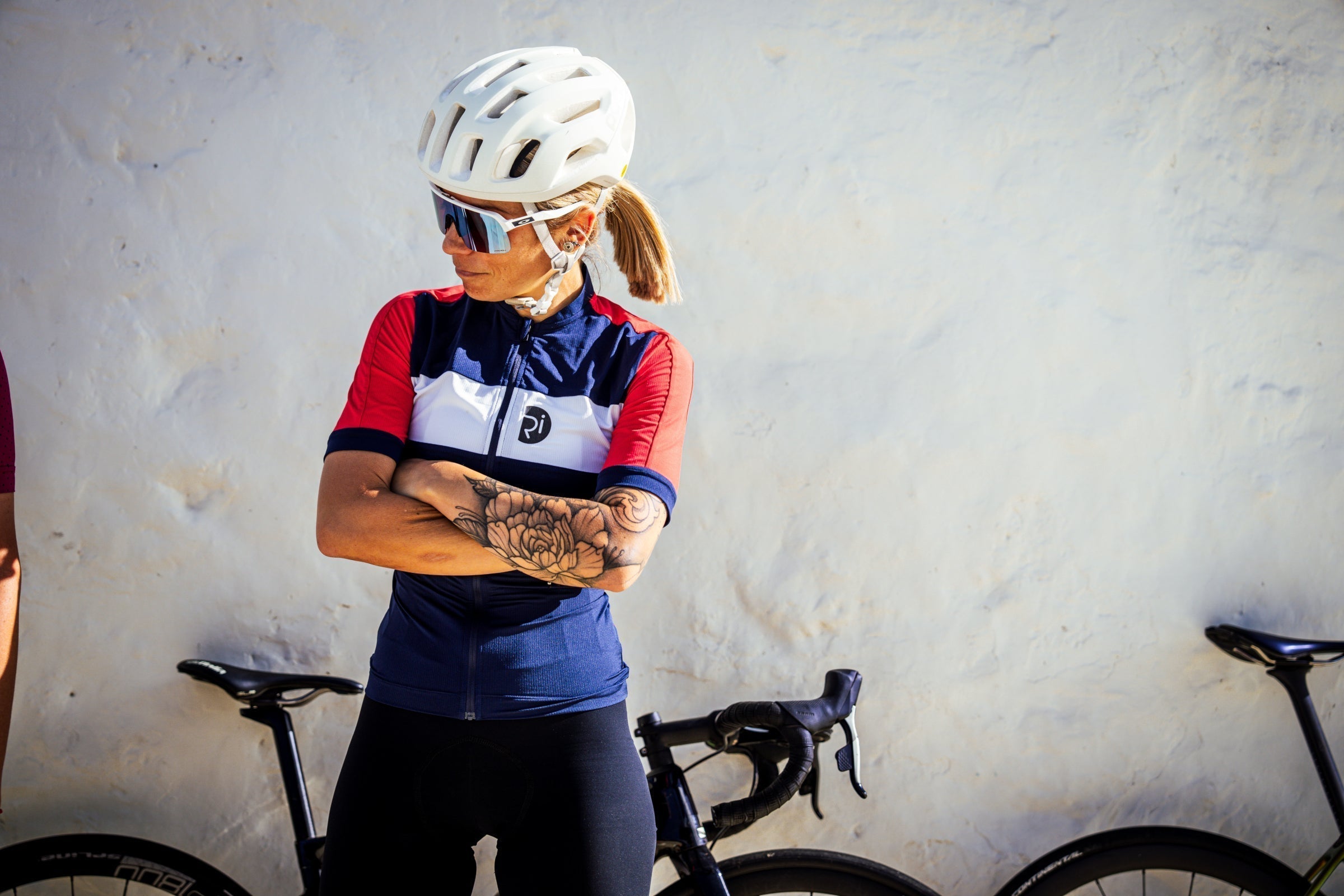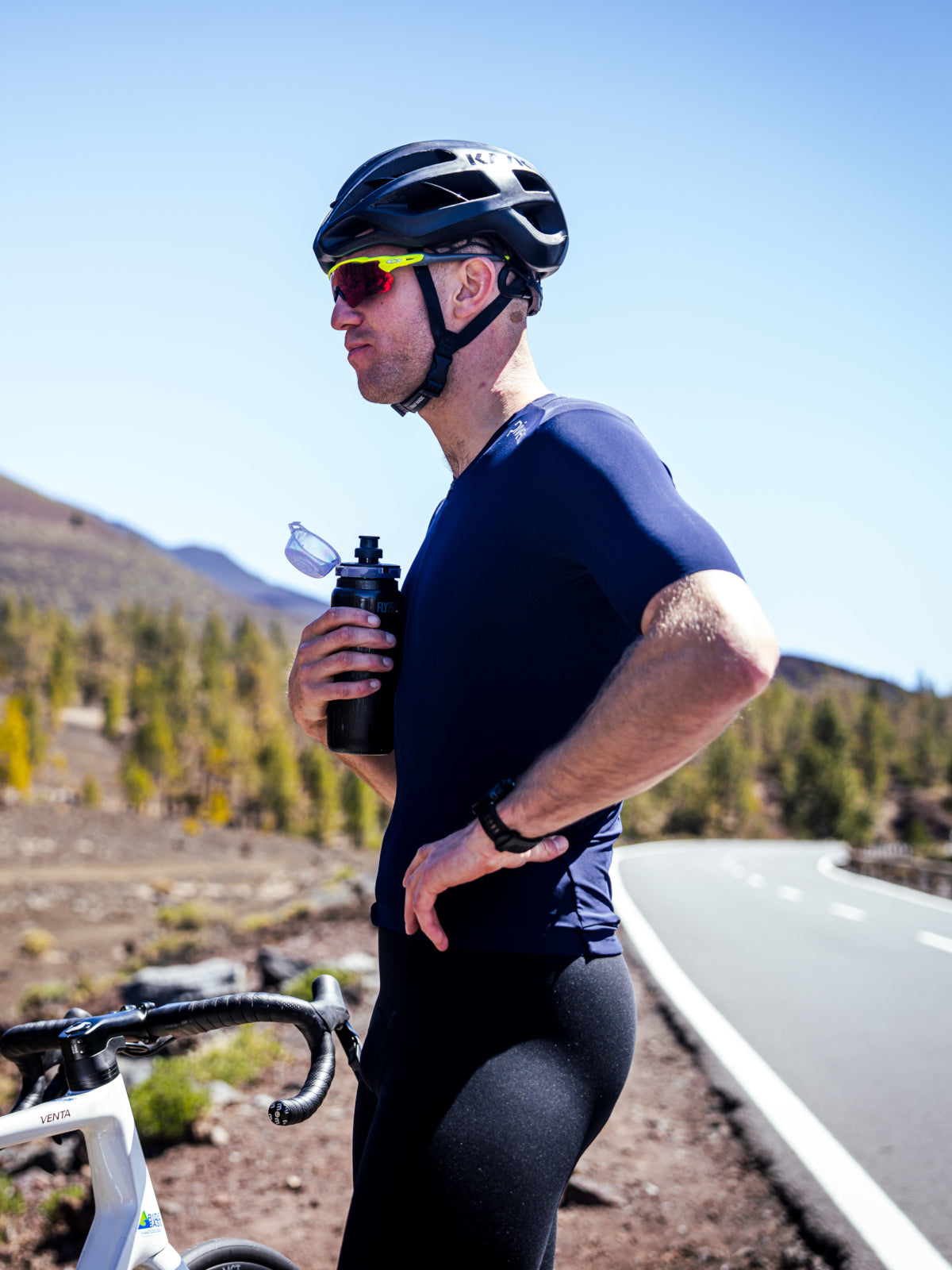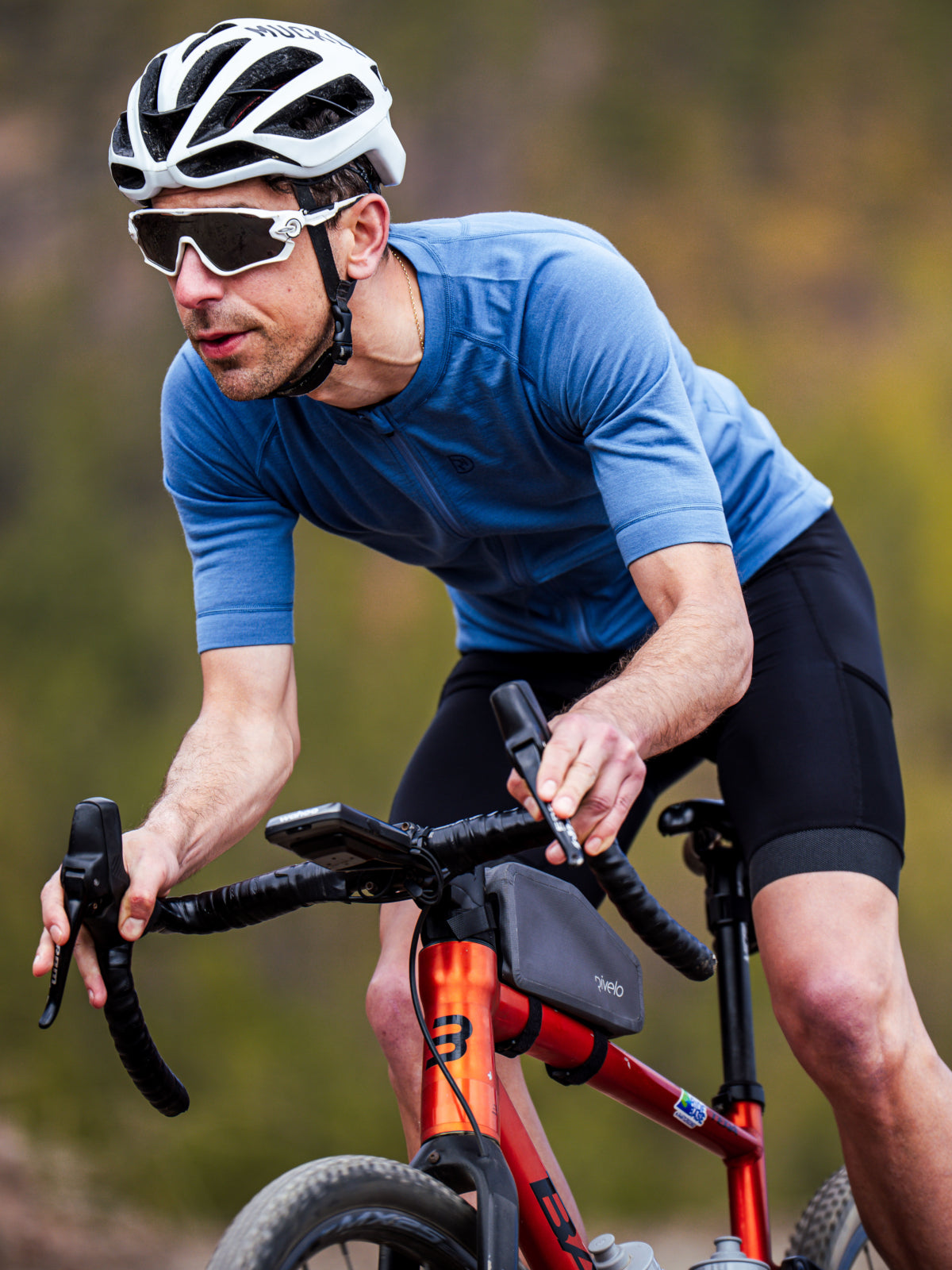
How to choose a cycling jersey
The right jersey does more than look good.
A good jersey keeps you comfortable, regulates body temperature, and can even improve performance. With so many options on the market, knowing what to look for makes all the difference.
1. Fit: Aero vs. Relaxed
Cycling jerseys typically come in two broad fit categories:
| Fit type | Ideal for | Key benefits | Notes |
|---|---|---|---|
| Race / Aero | Competitive riders, fast club runs | Close-fitting, reduces drag, lightweights | Less forgiving, can feel tight off the bike |
| Club / Relaxed | Training, commuting, leisure | More comfortable, room for layering | Slightly less aerodynamic |
- Race fit – Designed to sit close to the skin. Studies show that aerodynamic kit can save 20–30 watts at 40 km/h compared with looser kit.
- Relaxed fit – Offers comfort and versatility, particularly on long endurance rides or for riders preferring less compression.


2. Fabric technology
Modern jerseys use technical fabrics that wick moisture, regulate temperature and stretch for freedom of movement.
- Polyester blends – The most common base, quick-drying, and breathable.
- Mesh panels – Improve airflow in high-sweat areas.
- Merino wool blends – Naturally temperature-regulating and odour-resistant. Studies show merino can absorb up to 30% of its weight in moisture before feeling wet.
- UV protection – Many summer jerseys include SPF-rated fabrics to protect against sunburn.
Key metric to look for:
- Moisture-wicking capacity (g/m²/h). A good summer jersey will wick over 800g/m²/h
3. Seasonal choice
Layering is critical. A summer jersey with arm warmers extends its use into spring and autumn.
| Season | Jersey type | Key features |
|---|---|---|
| Summer | Lightweight short sleeve | Breathable fabrics, full-length zip, mesh |
| Spring / Autumn | Midweight long sleeve | Thermal fabrics, brushed inner, wind resistance |
| Winter | Thermal jersey / jacket hybrid | Fleece lining, water-resistant treatment, extended cuffs |
4. Practical features
When choosing a jersey, small details can make a big difference:
- Pockets – Standard is three rear pockets; look for a zipped valuables pocket.
- Zip – Full-length zips help regulate temperature.
- Grippers – Silicone grippers at hem and sleeves prevent ride-up.
- Visibility – Reflective details add safety for low-light rides.
5. Women’s vs. Men’s specific fit
Jerseys are often cut differently for men and women:
- Women’s jerseys – Shorter torso length, tailored waist, narrower shoulders.
- Men’s jerseys – Longer torso, broader shoulders, looser waist.
A good fit reduces fabric bunching and improves comfort across long rides.
6. How to size correctly
- Always check the sizing chart. Cycling jerseys differ in size between manufacturers.
- Measure chest circumference and waist as primary indicators.
- Remember: a jersey should feel snug when standing but natural once in riding position.
If between sizes, choose based on your riding goals. Tighter for aero performance, looser for endurance comfort.
7. Quick checklist
- Fit: Aero or relaxed?
- Fabric: Breathable, moisture-wicking, or thermal?
- Season: Summer, transitional, or winter?
- Features: Pockets, zips, grippers, visibility?
- Style: Does it fit your kit and brand identity?
Conclusion
Choosing the right jersey comes down to balancing fit, fabric, season and features. Get these right and you’ll ride further, faster and more comfortably in any conditions.